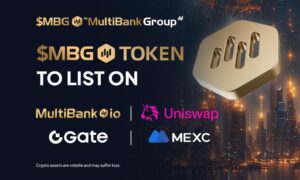By Sophie Guibaud, Co-founder and Chief Commercial & Growth Officer at Fiat Republic
In the first part of this three-part series, “Decentralisation for the Masses,” I discussed the concept of decentralisation and its potential to create a more open, transparent, and equitable society. In this article, we will explore how Web 3.0 can facilitate financial inclusion, and create a more democratised financial ecosystem.
Financial inclusion is the idea that all individuals and businesses should have access to a wide range of financial services, including bank accounts, loans, insurance, and investments. However, according to the World Bank, around 1.7 billion people worldwide are unbanked, meaning they do not have access to formal financial services. This lack of access to financial services makes it difficult for individuals and businesses to save, invest, and grow their wealth, which can perpetuate poverty and inequality.
Web 3.0 has the potential to increase financial inclusion by providing access to financial services for the unbanked and underbanked populations. Blockchain-based remittance services, for example, can enable individuals to send and receive money globally at lower fees and faster transaction times than traditional remittance services. Decentralised lending platforms can also provide access to loans and credit for individuals and businesses who may not have access to traditional banking services.
There are plenty of examples of Web 3.0 projects that aim to increase financial inclusion; one is OmiseGo, a decentralised payment platform that allows for instant, low-cost transactions across different currencies and payment systems, with the aim of providing financial services to the unbanked and underbanked populations in Asia and other parts of the world. Another example is Humaniq, a blockchain-based platform that provides financial services to the unbanked and underbanked populations in Africa using biometric identification technology.
Web 3.0 can also break down the barriers for those who already do have access to finance. Traditional finance systems are often complex, opaque, and exclusive, which can make it difficult for individuals and small businesses to access investment opportunities and financial products. Web 3.0 can democratise finance by providing access to investment opportunities and financial products to a wider range of people, with clearer terminology and without the need for intermediaries.
This is particularly true for those individuals and businesses who work as artists; by creating and selling NFTs, artists can benefit from a more direct relationship with their fans and supporters, bypassing traditional intermediaries like galleries and record labels. NFTs can also provide a new revenue stream for artists by enabling them to sell their work directly to collectors and fans, and potentially even earn royalties on future sales of their work. Web 3.0 can make it easier for artists to create and distribute their NFTs by providing decentralised marketplaces and platforms that enable them to reach a global audience and maintain control over their work.
Tokenisation is another area where Web 3.0 can democratise finance; it is the process of converting assets into digital tokens that can be traded on blockchain platforms, and can enable fractional ownership of assets, making it easier for individuals to invest in assets such as real estate, art, and commodities. The potential impact of tokenisation on democratising finance is significant, as it can enable more equitable distribution of wealth and investment opportunities, as well as helping individuals to diversify their investment portfolios.
Traditional hierarchies of finance and business have been set out for centuries, but there are now many opportunities for Web 3.0 to revolutionise the way in which this entire ecosystem works. The promise of access to finance for all is a huge pull and, once Web 3.0 is more widely adopted, the opportunities for wealth creation, wealth distribution, and the full democratisation of finance is endless. However, there are a few challenges that need to be overcome before we get to this point, which we will discuss in part three…



































